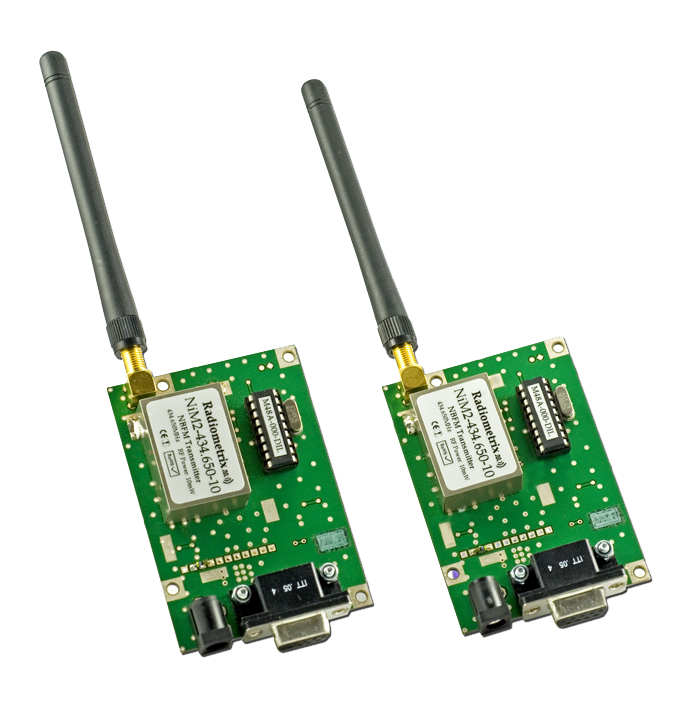The core of this family consists of the TDL2A and TDH2 transparent data transceivers, and the compatible RXL2 data receiver and TXL2 data transmitter.
Common family features:
- Fully transparent RS232 compatible data interface (data can be streamed at 9600 baud without buffering)
- Self timed (No additional user “TXE” signal needed)
- Full framing / packet detection. No random spurious “line noise” data in absence of a signal
- Efficient low latency short (3 byte payload) packets. Ideal for control applications.
- User programmable 1 of 8 address.
- Simple user control, via human readable command strings over the serial port
- 10mW (TDL2A & TXL2) or 25mW (TDH2) transmit power output
- Low power +5v supply (TDL2A: 28mA TX 22mA RX)
- (RXL2A only) Analogue RSSI output pin
Higher frequency operation is covered by the TDL3F, which combines TDL type modem hardware (and pin-out) with a BiM3(x) transceiver to cover 869 and 915MHz bands. The DWA3 is (in simple terms) a TDL3F fitted with an integral ceramic antenna





